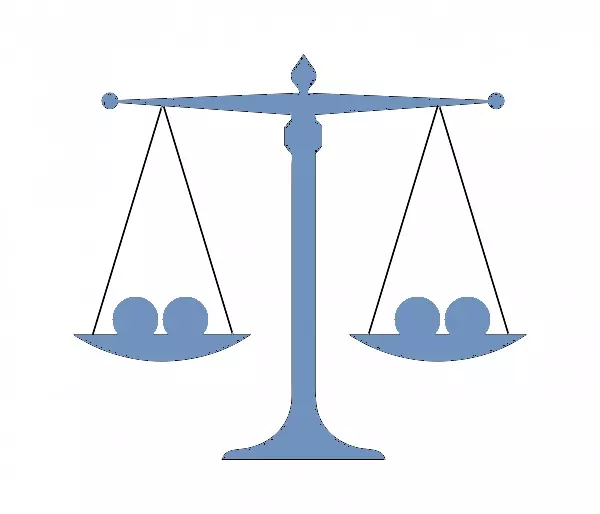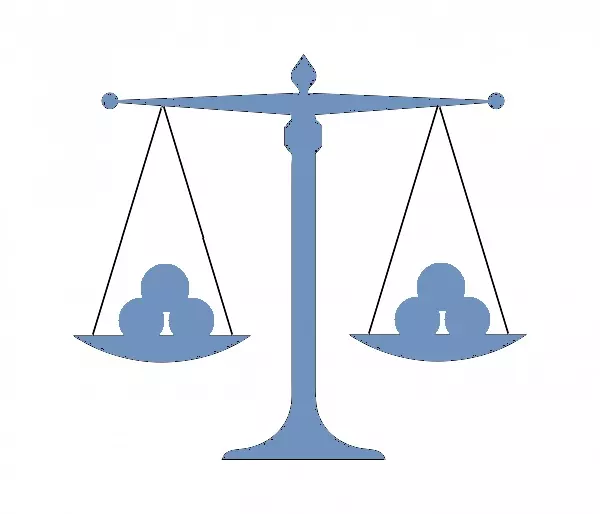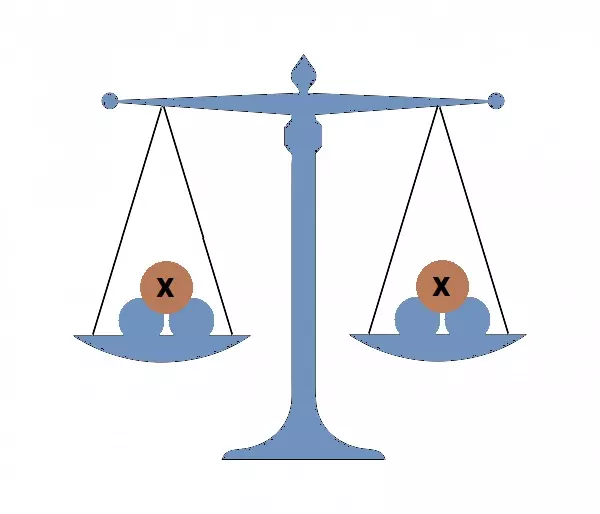[Originally published as Answering the Why Behind Math: Responding to Gracie Cunningham]
My heart was recently touched to hear of the viral video posted by a teen wondering about the why behind math expressed in such statements as “Who came up with this concept?” and “How would you even start on the concept of algebra?”
The questions are ones I wondered about for years too. I mean, why are there letters like x and y in math books? And what was the purpose?
While the why behind math is one that many mathematicians and philosophers have devoted their entire lives to explore in vain, I believe there are very simple answers. Below is an open letter to Gracie—and anyone else asking these questions.
Dear Gracie,
First, thank you for voicing the questions so many have asked but not spoken. They’re important questions.
I know your questions related to algebra, but bear with me for a minute, as I want to start with arithmetic and work my way up there.
Math is all based on describing the real-life consistencies we find around us. 1 + 1 consistently equals 2. If you take 1 apple and grab another, you’ll end up with 2. Throughout the years, men have used different symbols to describe that, but addition remains the same because that’s what actually happens in real life.
Now you might be asking, but why? And that’s another great question! The answer to that depends on how you look at the world. Many would try to tell you that the world operates consistently as the result of an accident (the Big Bang)—but that doesn’t really make any sense at all. If we’re just the result of an explosion, why is there such consistency?
There is no real naturalistic explanation for math. Many brilliant philosophers have tried to answer it, but failed.¹ Even Albert Einstein admitted that there was something miraculous in math.²
But if we look at the world from a different starting point, there is an explanation. Now, this next statement might sound a bit shocking to you, but I believe the Bible has answers to your questions. You might be thinking “The Bible, isn’t that just an old book of fairy tales!?”, or maybe you haven’t even ever thought about it, but bear with me and let’s assume what it says is true even if you don’t think it is. The Bible claims to be a revelation from our Creator; if this is true, we’d expect it to tie with what we see and explain the world in which we live. And it does.³ It says that a faithful, consistent God created all things—including the consistencies of creation. In fact, God talks about establishing His covenant with the “fixed order of heaven and earth” (Jeremiah 33:25 ESV).
Math works because creation is consistent, created and held together by a consistent God. Thus, we can memorize multiplication facts and rely on them to always work.
The Bible also tells us that God made man in His image, which is why we, unlike the animals, can think through how to express these consistencies around us. It’s why men, like Pythagoras, have been able to attempt to explain creation.
So why algebra? Well, it’s history is long and complicated, and I’m not going to attempt to summarize it all. The Greeks developed some pieces of it, including while trying to explain the relationships within shapes (Pythagoras is known for figuring out how the sides of a triangle relate together). The Arabs developed it further (the name comes from an Arab work). And it took off during the scientific reformation, when many needed it to describe the real-life consistencies they encountered.
For example, say you did experiment after experiment measuring the net force of different sized balls when traveling at the same acceleration of 10 meters per second squared. You found these measurements.
| Mass | Net Force |
| 10 kilograms | 100 Newtons |
| 9 kilograms | 90 Newtons |
| 8 kilograms | 80 Newtons |
| 7 kilograms | 70 Newtons |
You might want to see if you could predict how the mass of the ball will affect its net force without having to try every possible mass. So you look for a pattern.
Such a question presupposes a consistent universe—which was a presupposition many men in the scientific reformation had. They looked at their experiments and data and figured out how it related together. In the case of the balls, you notice that in each case, the force could be found by multiplying the mass by 10—which was the exact amount of the acceleration of the balls! You could write that like this:
Force = mass x acceleration
And rather than using words, why not save time and use a symbol to stand for the words?
F = ma
Now, a lot of algebra then deals with rearranging letters on paper. All we’re doing is applying what we can observe about arithmetic to these letters we’ve used as placeholders to stand for values, such as the F, m, and a. For example, we can see that adding the same poundage to a scale that has 2 pounds on each side leaves the sides equal.
2 = 2

2 + 1 = 2 + 1

Because we’re relying on the created world around us to stay consistent this way, we can also add the same quantity to both sides even if we don’t know it’s value (we’ll just use a letter to stand for that amount, whatever it is). In the case of weights on a scale, the x is standing for some unknown weight being added to both sides.

2 + x = 2 + x
And we can use that knowledge to solve problems. Note again our presupposition that creation is consistent…which I would argue is shouting out at us that there’s design and order around us, put there by a Creator.
You might find it interesting to note that, apart from acknowledging a Creator who also created our minds, the most brilliant minds have been left baffled as to why what they develop on paper actually applies—and how they can really know it to be true. After all, do we know truth based on experimentation? But we can’t possibly test every value! Or do we know it independently from experimentation? Why then does it actually work?³
Acknowledging a God answers that, giving us reason to presuppose order around us that will be consistent and that ties with our findings on paper because God has, in a limited way, given us the ability to think “God’s thoughts after him”—a quote attributed to mathematician/scientist Johannes Kepler, who was one famous man from the scientific reformation who saw math as a way of describing God’s creation.
Ultimately, I believe math’s existence and ability to work outside of a textbook is shouting out at us that there is a God to whom we must give an account one day. Just as we can’t change how math works because that’s how He governs creation, so we can’t change how He operates in other areas too.
So it’s important to know what God has said. As I said earlier, I’m starting from the standpoint that the Bible is God’s Word to us. There are many reasons why I believe it is–we could talk about how it was written over more than 1,000 years by several different authors yet has a unified message implying one inspiring author behind it, how Jesus perfectly fulfilled hundreds of prophecies written hundreds of years earlier, and more.
But, as one editor for the Chicago Tribune who set out to prove Christianity false discovered, the Bible’s message centers on Jesus’ resurrection–and the historical evidence for that is overwhelming (see The Case for Christ movie or the book by the same title). There is compelling evidence that Jesus was this Creator God who really did rise from the dead, proving His power over death.
This same Jesus claimed that whoever would believe in Him, though he died, would live (John 11:15 ESV). The Bible’s core message is this: God made us, we’ve rebelled against Him and stand under His righteous judgment, but He’s made a way for us to escape the punishment we deserve, know Him, and have eternal life in Heaven through Jesus Christ when we repent of our rebellious ways and put our trust in Him alone. To quote a well-known verse: “For God so loved the world, that he gave his only Son, that whoever believes in him should not perish but have eternal life” (John 3:16 ESV).
Please watch this video to learn in a nutshell what I’m trying to say:
I hope that helps answer your questions. And again, I’m really glad you asked them—they’re important questions to grapple with and understand.
Sincerely,
Kate Hannon
Footnotes
- See James Nickel, Mathematics: Is God Silent? (Ross House Books: Vallecito, CA: 2001). This book walks through the history of math in depth, showing how men have tried unsuccessfully to explain math apart from the biblical God.
- “Even if the axioms of the theory are posited by man, the success of such a procedure supposes in the objective world a high degree of order which we are in no way entitled to expect a priori. Therein lies the “miracle” which becomes more and more evident as our knowledge develops…And here is the weak point of positivists and of professional atheists, who feel happy because they think that they have not only pre-empted the world of the divine, but also of the miraculous. Curiously, we have to be resigned to recognizing the “miracle” without having any legitimate way of getting any further.” Albert Einstein (quoted in Mathematics: Is God Silent?, p. 210).
- See “Evolutionary Math”







